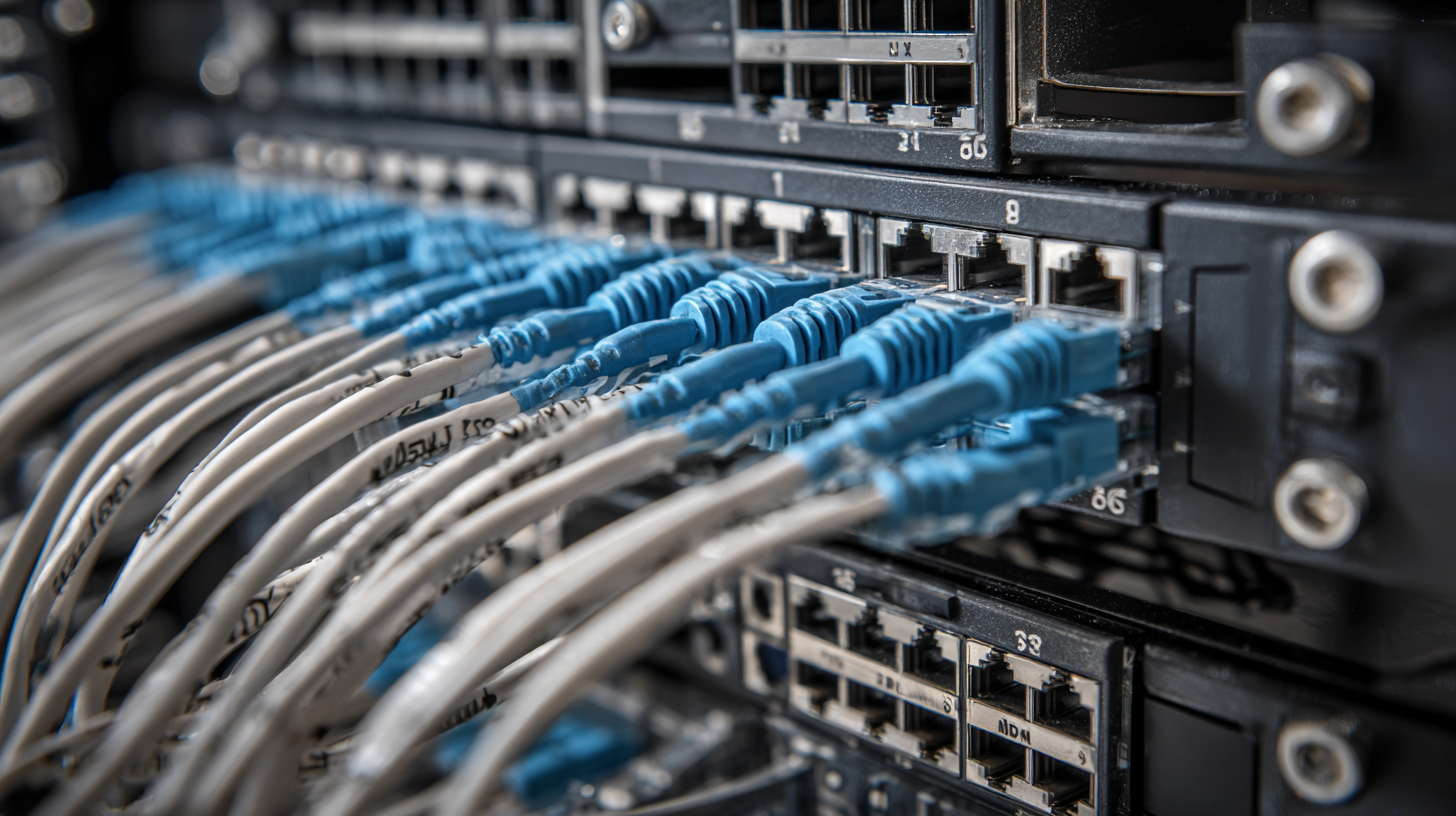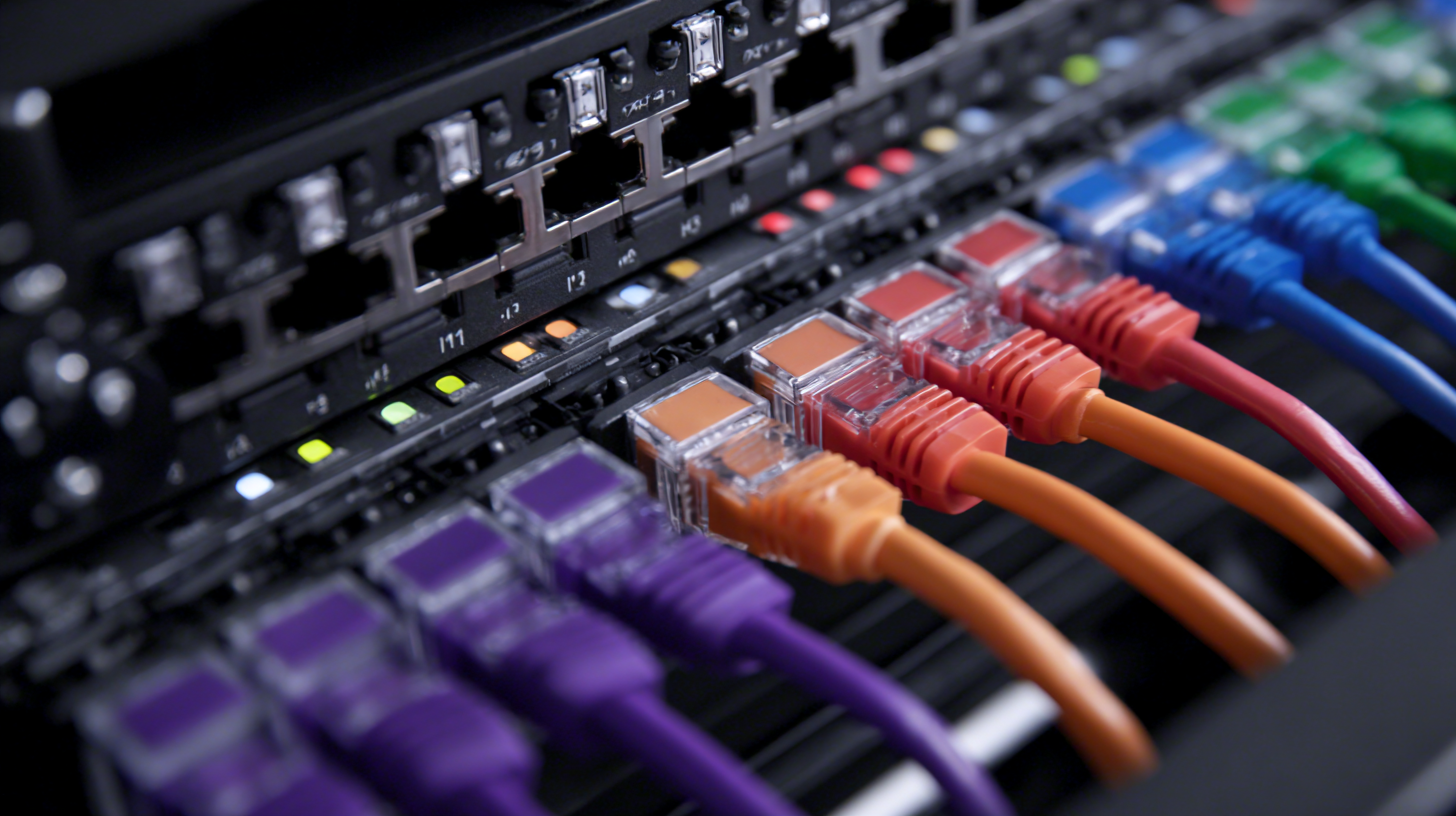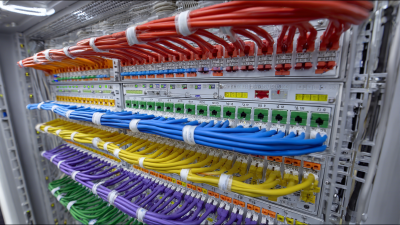How to Choose the Right Patch Panel for Your Networking Needs
In today’s rapidly evolving technological landscape, selecting the appropriate patch panel is crucial for optimizing network performance and efficiency. According to a report by ResearchAndMarkets, the global patch panel market is expected to grow at a compound annual growth rate (CAGR) of 8.2% through 2027, driven by the increasing demand for higher bandwidth and more reliable network connections. A patch panel serves as a central point for managing and organizing numerous network cables, enabling easier troubleshooting, maintenance, and upgrades. Choosing the right patch panel involves understanding various factors such as port density, connectivity options, and cabling standards. As businesses prioritize network resilience and scalability, making an informed decision on patch panels can significantly enhance operational productivity and overall network infrastructure.

Understanding Different Types of Patch Panels: A Comprehensive Guide
When selecting a patch panel for your networking needs, it's crucial to understand the different types available in the market. There are primarily two categories: unmanaged and managed patch panels. Unmanaged patch panels are typically simpler and more cost-effective, making them an ideal choice for home networks or small offices. According to a report by the International Data Corporation (IDC), the managed patch panel market is witnessing a growth rate of over 8% annually, driven by the increasing demand for more sophisticated network management solutions, especially in enterprise environments.
Moreover, patch panels also come in various configurations such as fiber optic and copper options, catering to different networking demands. Fiber optic patch panels are renowned for their high data transfer speeds and low latency, making them suitable for data centers and high-performance applications. The Ethernet patch panels, on the other hand, are more common in local area networks (LANs). As per a study by MarketsandMarkets, the global Ethernet patch panel market is projected to reach USD 1.5 billion by 2026, emphasizing the importance of reliable copper connectivity in modern networking infrastructures. Understanding these distinctions is vital for making an informed choice that aligns with both current and future networking needs.
Patch Panel Types Comparison
Assessing Your Network Needs: Bandwidth, Speed, and Capacity Considerations
When selecting the right patch panel for your networking needs, it's crucial to assess your network requirements in terms of bandwidth, speed, and capacity. According to the latest report from the International Data Corporation (IDC), enterprises are experiencing a data growth rate of around 40% year-over-year, primarily driven by the adoption of cloud services and the IoT. This explosive growth directly impacts the bandwidth demands on networks, making it essential to choose patch panels that can accommodate higher-speed connections, such as those supporting 10GBase-T or even 40G.
In addition to bandwidth considerations, evaluating the overall speed and capacity of your network is vital. For instance, the 2023 Network Performance Report by Cisco indicates that organizations utilizing high-capacity patch panels not only experience enhanced data transfer rates but also significant improvements in network efficiency. By opting for patch panels that support at least Category 6a cabling, businesses can ensure that they are well-equipped for current and future data transmission needs, thereby maximizing their infrastructure investments and minimizing downtime during peak usage periods.
Key Features to Look for in Patch Panels: Rack Units, Ports, and Cable Management
When selecting the right patch panel for your networking needs, several key features must be considered. First, rack units play a vital role in determining how much space the patch panel will occupy in your server rack. A common choice is a 19-inch rack mountable panel, which provides a versatile and standardized fit for most equipment. You should evaluate the total height in rack units (U) to ensure that it aligns with your existing setup and can accommodate future growth without overwhelming your available space.
In addition to rack units, the number of ports on the patch panel is crucial. Depending on your networking requirements, choosing from 12, 24, or even 48 ports can significantly impact your connectivity options. It's essential to anticipate future needs while assessing the current demand; over-provisioning can save you from needing additional panels soon after installation. Finally, effective cable management features, such as molded guides and removable panels, can help maintain a tidy workspace. Proper management not only improves airflow and reduces the risk of damage but also facilitates easier troubleshooting and maintenance down the line.

The Importance of Compatibility: Ensuring Your Patch Panel Works with Existing Hardware
When selecting a patch panel for your networking setup, compatibility with existing hardware is paramount. A patch panel essentially serves as a centralized point for managing and connecting various network cables, so it must align seamlessly with your switches, routers, and other devices. Before making a purchase, it's essential to assess the type of cabling in use—whether it be Cat5e, Cat6, or fiber optic—and ensure that the patch panel supports it. Mismatched specifications can lead to degraded network performance and unnecessary complications during installation.
Moreover, considering form factors and compatibility with rack systems is crucial. Most patch panels come in standard sizes designed for specific rack units, and selecting one that fits well with your current setup will save you time and effort. It’s also beneficial to check the manufacturer’s guidelines and look for industry standards certification, which ensures that your new patch panel will work effectively with your existing hardware. This compatibility not only helps maintain optimal data transmission speeds but also simplifies future upgrades and expansions of your network infrastructure.

Budgeting for Quality: Cost-Effective Options vs. Premium Performance Patch Panels
When selecting a patch panel,
budgeting is a crucial factor that can significantly influence your decision.
Cost-effective options often attract buyers with lower upfront prices, making them enticing for smaller businesses or home networks.
These panels can competently manage basic networking needs, providing a practical solution for those who require straightforward connectivity without the added complexities.
However, it’s essential to understand that while these options may save money initially, they might not offer the same longevity or performance as higher-end alternatives.
On the other hand, premium performance patch panels are designed for scalability and superior functionality, catering to more demanding networking environments.
Although they require a bigger investment, these panels often include advanced features such as better shielding, higher port density, and improved cable management capabilities.
For organizations that prioritize reliability and speed, investing in a premium panel can yield long-term benefits and prevent potential costly downtimes.
Ultimately, the decision should hinge on both current and anticipated networking demands, ensuring that your investment aligns with future growth and performance requirements.
Related Posts
-

7 Best Practices for Selecting the Right Patch Panel for Your Network
-

How to Choose the Right Patch Panel for Your Networking Needs
-

How to Choose the Right Network Patch Panel for Your Installation Needs
-

7 Essential Tips for Choosing the Best Cat 6 Bulk Cable for Your Network Needs
-

Common Issues Faced When Sourcing Bulk Cat 6 Cable for Global Supply Chains
-

7 Best Patch Cable Options for Seamless Connectivity Solutions in 2023
